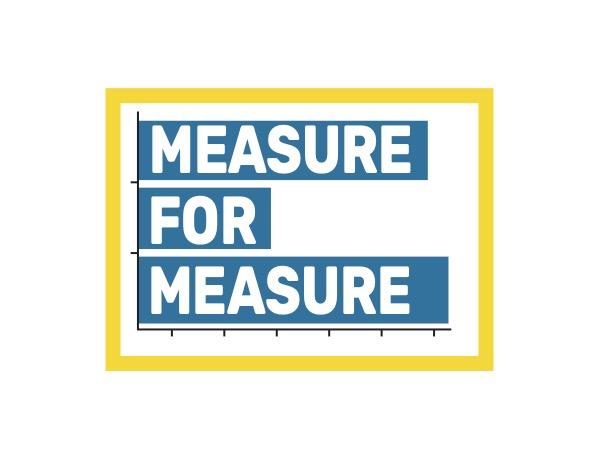Sharing Ownership of a National Research Agenda for the Arts

I am his Highness’ dog at Kew;
Pray tell me, sir, whose dog are you?
- Alexander Pope, “Epigram Engraved on the Collar of a Dog Which I Gave to His Royal Highness”
Next month, the NEA will release a new strategic plan. For federal agencies, no less than for commercial or nonprofit entities, such documents are only as good as their owners. Who will monitor the resulting goals and action items, who will continue to shape them, and who will be accountable for progress—yes, these poor protagonists should be named at the outset.
Similarly, when developing a public research agenda, the idea of ownership is crucial. Agenda: the very word reeks of horse-trading, special interests, or stale business meetings. But I find it more helpful to consider the etymological kinship of agenda to agency, with the latter term denoting, according to at least one dictionary entry, “the capacity, condition, or state of acting or exerting power.” With the NEA’s research agenda for the next five years, we aim to redistribute that power to a broad constituency of researchers, arts and cultural practitioners, and community leaders.
Instead of chalking up a slate of studies or analyses to be conducted over this period, we will use our grant mechanisms to welcome project proposals that align with one of four priority research topics. Each topic listing includes a menu of sample research questions; applicants may pitch to one or more questions on that menu—or they may pose a different question altogether. This flexibility is itself a tribute to the ingenuity of NEA research grant applicants who, over the past decade, have shown themselves more than capable of connecting their own project ideas with issues of national importance.
Even as the NEA crowd-sources research on priority questions, the agency will continue to support tools, data sources, and infrastructure that can enrich future studies.
To date, some of these resources include: the National Archive of Data on Arts & Culture; the Sound Health Network; the NEA Research Labs program; research and data agreements with the U.S. Census Bureau, the Bureau of Economic Analysis, the National Institutes of Health, and other federal agencies; and an “Arts Data Profiles” web series. Also planned is creation of a National Arts Statistics and Evidence Reporting Center, which will work with a cross-section of arts practitioners, researchers, and policy-makers to produce statistical reports and evidence guides that can help the field.
Its direct benefits for “the field,” in fact, are a distinguishing feature of this five-year agenda (2022-2026), compared with the prior two (2012-2016 and 2017-2021). For much of the last decade, the NEA’s research application guidelines have prioritized experimental and quasi-experimental studies that explore positive relationships between the arts and societal outcomes such as health and well-being, cognition and learning, and economic growth and innovation. Although such studies still will be encouraged, the new research agenda notes:
Rather than focus exclusively on why and how the arts matter, today’s agenda needs to consider for whom are such benefits realized, and under what optimal conditions—and how can cultural providers use this knowledge in their own work. These concerns take on heightened significance as the arts community, and our nation as a whole, rallies to meet new societal and sectoral challenges—including but not limited to the economic, social, and health-related traumas stemming from COVID-19.
At the same time, through its grant application guidelines, the NEA will incentivize the creation of practitioner tools grounded in research.
A handy infographic summarizes the five-year research priorities. Under each of the four topic areas (directly below), there are more detailed research questions to be considered.
- What are measurable impacts of the arts?
- In what ways do the arts contribute to the healing and revitalization of communities?
- What is the state of diversity, equity, inclusion, and accessibility in the arts?
- How is the U.S. arts ecosystem adapting and responding to social, economic, and technological changes and challenges to the sector?
Ultimately, any joint ownership of the NEA research agenda applies not only to the scholars and practitioners who conduct the actual studies—it extends the concept to the proposed beneficiaries of that research. In future grant application guidelines, the NEA will encourage community-based participatory research approaches, including qualitative research methods, so that a broader range of stakeholders can help to pinpoint research questions and perhaps even play an active role in the study design and execution and the interpretation of study results.
When it comes to power-sharing in arts research, the NEA is fortunate to have Dr. Maria Rosario Jackson (Senate-confirmed on Dec. 18, 2021!) as our incoming chair, since her own research and pedagogical practices have evinced such deep-rooted collaborations at every step of the way. We have much to learn from her.
Note: This is a transitional year for the NEA’s research awards programs. In the two research grant guidelines (for Research Grants in the Arts and the NEA Research Labs program) that will be issued later this month, the above principles have yet to be fully integrated. Accordingly, this year’s applicants will have an opportunity either to address items in the new research agenda, or to address items on the old agenda. Then, from 2023 through 2026, we expect the changes to be mirrored in both sets of guidelines.




